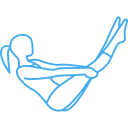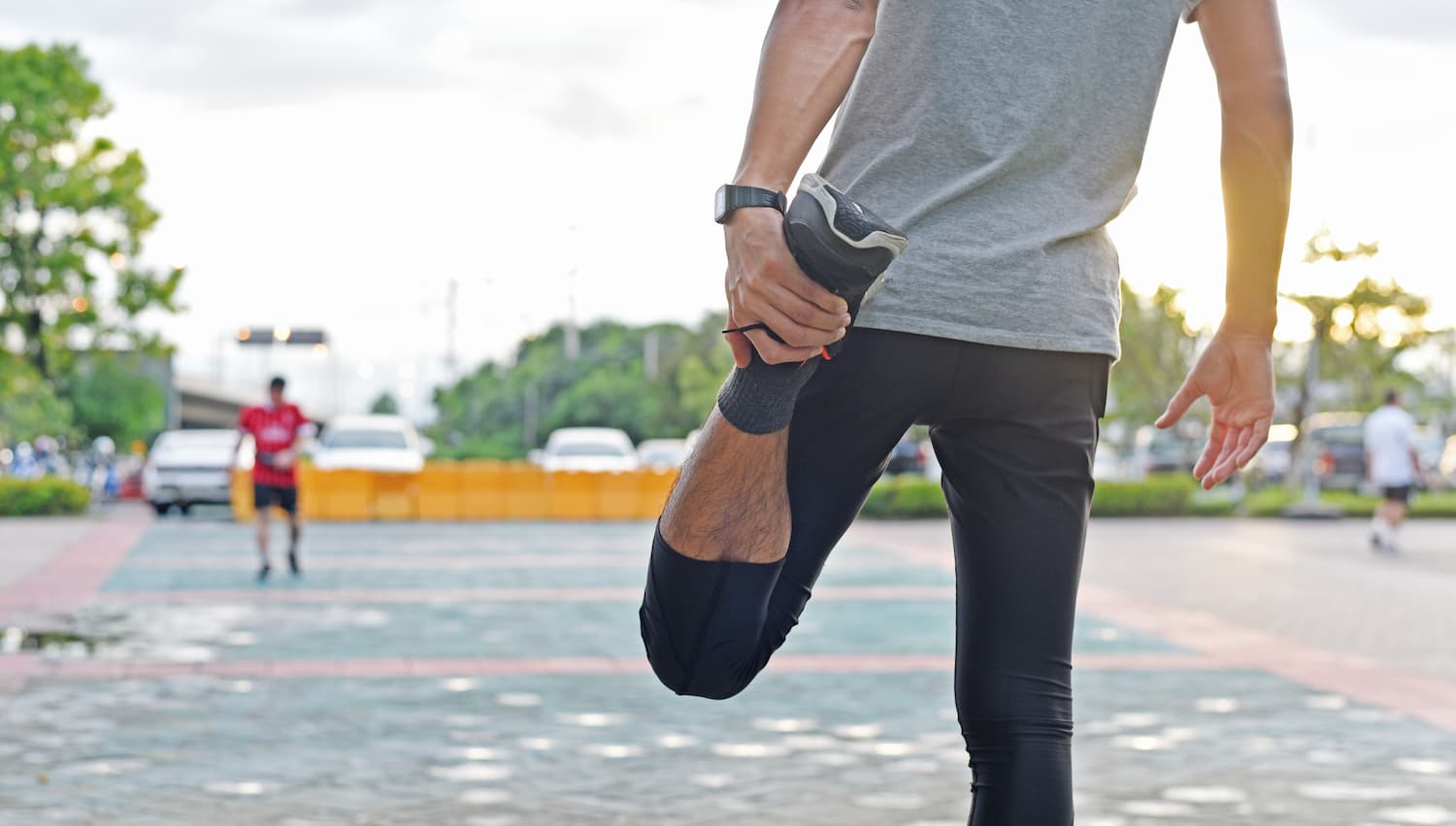Here is a list of the common injuries and conditions we treat. We are adding content for each injury over time and you can see our blog page for information on how we treat other conditions. Feel free to reach out if you have any questions, prior to booking your assessment.
- Running – Biomechanical faults and Pain
- Achilles Strains and Ruptures
- Ankle Sprain rehabilitation
- Plantar Fasciitis and Foot Strengthening
- Hip Pain
- Lower Back Pain
- Neck Pain
- Whiplash
- Nerves Injuries – Sciatica
- Nerve Injuries – Pinched Nerves
- Shoulder – instability- dislocation
- Shoulder – Rotator Cuff Tears
- Elbow -Tennis Elbow
- Thumb – De-Quervains

At Pilates4Physio, we treat a number of running-related injuries using physiotherapy and Pilates. Many of these injuries can occur in any activity or sport, but they are common in runners.
Here are the main injuries we treat in runners:
- Runner’s Knee Pain
- Achilles Tendinopathy
- Shin Splints
- Plantar Fasciitis
- Nerve Injuries
- Quadricep and Hamstring Strains
- Mortons Neuroma
- Hip Pain
- Pelvic Pain

Runners Knee Pain:
A common injury is ‘runner’s knee,’ also known as patello-femoral knee pain.
This is irritation of the underside of the knee cap (patella). The cartilage under the kneecap is rich in nerve endings, so the pain can be quite high and easily provoked. Pain can be felt under and around the knee cap. It is worse with running, squats, lunges, and using stairs. Even sitting with the knee bent may be painful.
In your assessment, we look at the biomechanics of your hips, knees, and feet to see what may be the underlying cause. We also look at your running gait to see how you run. We also look at your flexibility and strength of the main muscles acting on the hips, knees, and feet.
Treatment must include some modification of your running volume as, otherwise, the pain will become persistent and chronic. Initial rehabilitation includes taping, stretching, and modifying the running gait to decrease pain. Once the pain is under control, the strengthening is then progressed. The current research recommends hip and knee strengthening as the most effective treatment. Each patient is unique and so treatment must be tailored to the individual. For further information, explore how we treat knee cap pain in more detail.
Achilles Tendinopathy
Achilles Tendinopathy involves inflammation and degeneration to the tendon connecting the calf muscles to the heel bone. Recent research suggests that tendinopathy involves the degeneration of the tendon and not so much inflammation. Pain can be felt at the tendon insertion to the heel bone, or at the middle of the tendon. Pain will be felt with running, stretching, and any toe-off action, even when walking for longer periods.
For runners, it is important to look at your training volume. An increase in distance or frequency can cause tendinopathy. The tendon is unable to adapt to sudden or large increases in training. Your running mechanics may also be a factor. We look at your foot strike and stride length to see if these are contributing factors.
Treatment includes pain-relief measures. Reducing load from running is essential to allow the tendon to heal. Strengthening will restore the tendon to its normal resilience. Changes to your running gait, hip, and knee mechanics will reduce pain and speed up your recovery.
The Pilates equipment is ideal for tendon rehabilitation. Exercises can be modified, depending on the stage of your healing. The Pilates reformer, jump board, and trampoline are very helpful in developing explosive power in the tendon.
Shin Splints (Medial Tibial Stress Syndrome)
Shin splints affect runners, causing pain on the inside of the shin bone. Pain is felt at the lower or middle shin. This is an overuse injury of the deep tendon of the Tibialis Posterior. Eventually, the bone can become inflamed, leading to Periostitis.
There are a number of causes, and each runner will be different. These include the following:
- Increased running distance
- Hip and pelvic drop on foot strike
- Excessive pronation
- Increased running stride
- Higher impact loading on foot strike
- Decreased knee flexion on foot strike
In your assessment, we look at biomechanical factors, muscle strength, and flexibility. We also look at your foot mechanics and foot strike pattern when running. Treatment must involve some reduction of running volume so that the tendon can heal.
The strengthening program should be pain-free to be effective.
In the short term, orthotics and taping will help to decrease pain. Strengthening includes the hips, knees, and feet. Making changes to your step length, cadence, and foot strike will also reduce pain and allow the area to heal. Over-the-counter-orthotics help to offload the shin, allow a reduction in pain, and assist healing.
Plantar Fasciitis
This is another common injury in runners, usually triggered by overuse or your running gait pattern. Your shoes may need to be changed for footwear that is more supportive. Over-the-counter orthotics will help to off-load the strained plantar fascia. In addition, foot strengthening is important to build up the foot arch muscles and repair the degeneration. Feel free to explore our process for treating Plantar Fasciitis in more detail.
Nerve Injuries in Runners
These types of injuries are uncommon, but we have to be on the lookout for them.
There are patterns of symptoms that indicate a nerve injury or an irritated nerve. Numbness and tingling, burning, loss of sensation, and/or loss of strength indicate a nerve injury. Some nerves that become compressed or overstretched include the peroneal, tibial and plantar nerves. Our assessment will determine whether you have these types of injuries.
Hip Pain in Runners
Hip injuries occur in muscles, ligaments, and the hip joint. Sometimes an underlying arthritic condition is aggravated. See our hip physiotherapy page to see how we assess and treat these conditions.
Typical hip-related injuries include groin strain, hip flexor strain, gluteal tendinopathy, labral tears, and osteoarthritis. As with all injuries, we are looking for the root cause. Having a good balance in the muscles around the hip is important in preventing running injuries. In your assessment, we test the strength and flexibility of these muscles. We look at your running injury history, mechanics, and running pattern to determine the root cause.
Pelvic Pain
Pelvic pain can come from a number of muscles, tendons, and joints. There is also a considerable overlap of pain from the hip and lower back. Careful assessment will determine where your problem is coming from. The sacroiliac joint can become painful and inflamed. Sacroiliac joint pain can be related to muscle weakness around the pelvis and lower back. Weak glutes and short quadriceps or hip flexors can cause an imbalance in the pelvis. Weak pelvic floor and lower abdominals may also be a factor and cause more strain on the sacroiliac joints.
Pilates-based physiotherapy is ideal for running-related injuries to the pelvis. The classic equipment is a great way to mobilize and strengthen the joints and muscles. For more details, view our blog posts on sacroiliac joint pain as well as lower back pain.
Quadricep and Hamstring Injuries
Quadriceps are the muscles in the front of the thigh. They can be strained or torn in runners. This is more likely to occur in an explosive movement or from over-training.
The assessment will determine if there is pain and weakness in these muscles. Treatment is directed at rest, strength training, and later flexibility. Afterwards, we graduate you back to your running, based on your healing time, pain, and strength. Explore how we assess and treat this kind of pain for more details.
Returning to Running
For all running-related injuries, it is important to get you back to what you love. There has to be a relative rest period, however, or lower running volume to allow the injury to heal.
Returning to running is also part of your rehabilitation. We combine Pilates-based exercises on classic equipment to get you back to running. The Pilates reformer is ideal for this type of retraining. We help you start your very own back to running program. This may initially involve a walk/run combination before building up to your usual distance.
